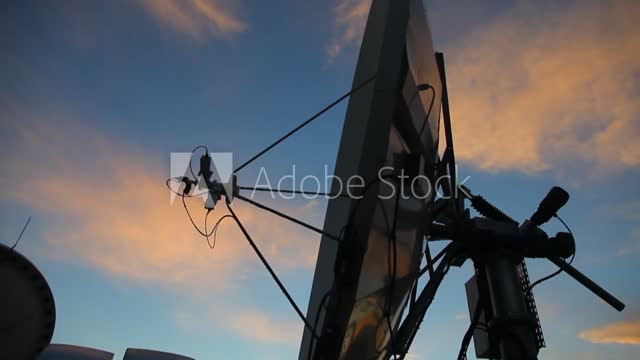Premium Only Content

James Webb Space Telescope Just Proved Its Value in the Search for Alien Life
http://corneey.com/edcgc0
By Chris Impey and Daniel Apai, the University of Arizona on Jul 15, 2022
TRAPPIST-1e is a rocky exoplanet in the habitable zone of a star 39 light-years from Earth and may have water and clouds, as depicted in this artist’s impression. Credit: NASA/JPL-Caltech
To search for alien life, astronomers will search for clues in the atmospheres of distant planets – and NASA’s James Webb Space Telescope just proved it’s possible to do so.
The ingredients necessary for life are spread throughout the universe. While Earth is the only known place with life in the universe, detecting life beyond our planet is a major goal of modern astronomy and planetary science.
We are two researchers who study exoplanets and astrobiology. Thanks in large part to powerful next-generation telescopes like James Webb, scientists like us will soon be able to measure the chemical makeup of atmospheres of planets orbiting around other stars. It is hoped that we will detect a chemical signature of life on one or more of these exoplanets.
There are many known exoplanets in habitable zones – orbits not too close to a star that the water boils off but not so far that the planet is frozen solid – as marked in green for both the solar system and Kepler-186 star system with its planets labeled b, c, d, e and f. Credit: NASA Ames/SETI Institute/JPL-Caltech
Habitable exoplanets
Life might exist in our solar system where there is liquid water – such as in the oceans of Jupiter’s moon Europa or in the subsurface aquifers on Mars. Searching for life in these places is incredibly difficult, however, as they are hard to reach and detecting life would require sending a probe to collect and return physical samples.
Many astronomers believe there’s a good chance that life exists on planets orbiting other stars, and it’s possible that’s where extraterrestrial life will first be found.
There are around 300 million potentially habitable planets in the Milky Way galaxy alone, according to theoretical calculations, and several habitable Earth-sized planets within only 30 light-years of Earth – essentially humanity’s galactic neighbours. Astronomers have discovered over 5,000 exoplanets so far, including hundreds of potentially habitable ones, using indirect methods that measure how a planet affects its nearby star. While these measurements can give astronomers basic information on the mass and size of an exoplanet, they don’t provide much else.
Every material absorbs certain wavelengths of light, as shown in this diagram depicting the wavelengths of light absorbed most easily by different types of chlorophyll. Credit: Daniele Pugliesi/Wikimedia Commons, CC BY-SA
Looking for biosignatures
To detect life on a distant planet, astrobiologists will inspect starlight that has interacted with a planet’s surface or atmosphere. If the atmosphere or surface was transformed my life, the light may carry a clue, called a “biosignature.”
For the first half of its existence, Earth sported an atmosphere without oxygen, even though it hosted simple, single-celled life. Earth’s biosignature was very faint during this early era. That changed abruptly 2.4 billion years ago when a new family of algae evolved. The algae used a process of photosynthesis that produces free oxygen – oxygen that isn’t chemically bonded to any other element. From that time on, Earth’s oxygen-filled atmosphere has left a strong and easily detectable biosignature on the light that passes through it.
About Us https://bit.ly/3GUPFOa +919942258153 [email protected]
Thank You Very Much for Sharing YourValuable Thoughts
https://1ae62839ud13j3f-wzj-2icsd3.hop.clickbank.net
-
 56:01
56:01
BonginoReport
2 hours agoAI Trump SH*TS On Harry Sisson - Nightly Scroll w/ Hayley Caronia (Ep.159)
8.69K15 -
 LIVE
LIVE
Side Scrollers Podcast
1 day ago🔴SIDE SCROLLERS FUND-A-THON🔴DAY 1🔴100% REVENUE HELPS CHANGE CULTURE!
909 watching -
 DVR
DVR
StoneMountain64
5 hours agoBattlefield 6 is ALREADY getting BETTER
19.6K1 -
 1:03:40
1:03:40
TheCrucible
3 hours agoThe Extravaganza! EP: 56 with Geust co-host Rob Noerr (10/20/25)
12.7K4 -
 LIVE
LIVE
GritsGG
8 hours agoDuos Into Ranked Top 70! Most Wins in WORLD! 3744+!
66 watching -

Donald Trump Jr.
4 hours agoDems Buy One Way Ticket to Crazytown, Plus Interview with AJ Rice! | Triggered Ep.284
37.1K43 -
 1:54:09
1:54:09
Redacted News
3 hours agoBREAKING! Another Trump assassination plot foiled? New info in Charlie Kirk's murder | Redacted
155K163 -
 LIVE
LIVE
Quite Frankly
5 hours agoNo Kings Clown Pill, Gov't Shutdown, EXTRAS! | Rich Baris 10/20/25
534 watching -
 LIVE
LIVE
The Mike Schwartz Show
3 hours agoTHE MIKE SCHWARTZ SHOW Evening Edition 10-20-2025
3,652 watching -
 1:28:59
1:28:59
Kim Iversen
4 hours agoTrump EMBARRASSED: Gets Played by Israel AND China
20.3K88